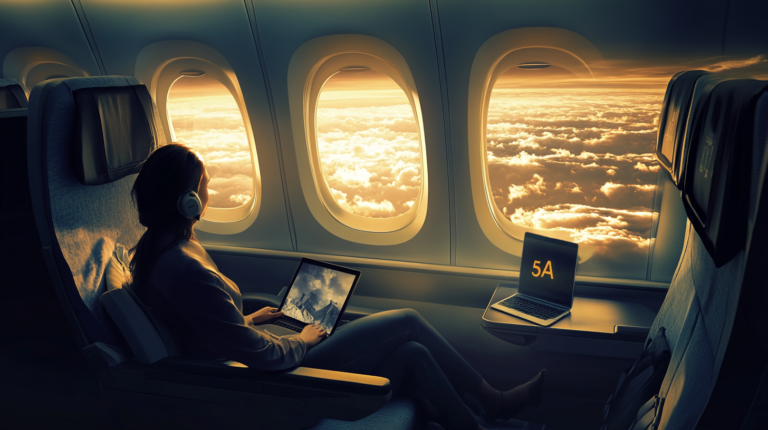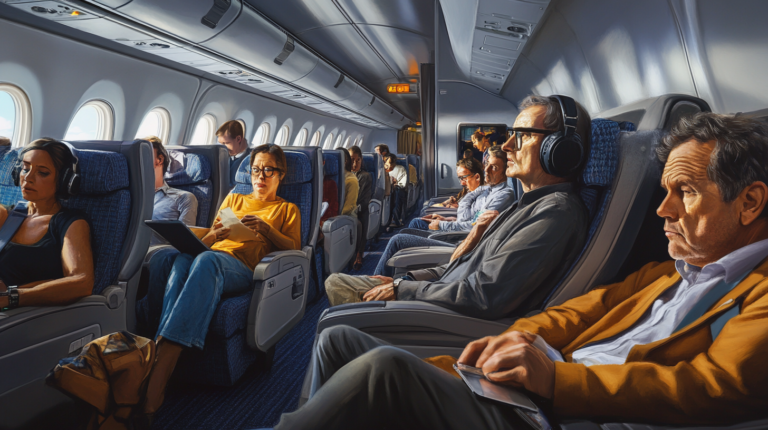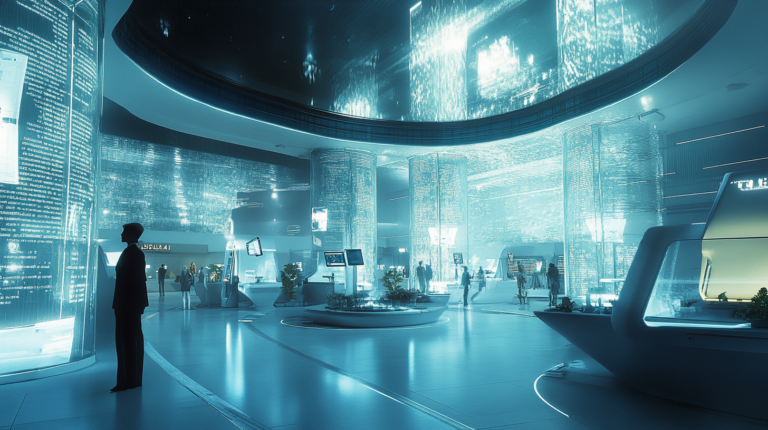When Airlines Experiment: Limited-Edition Livery & Brand Collaborations
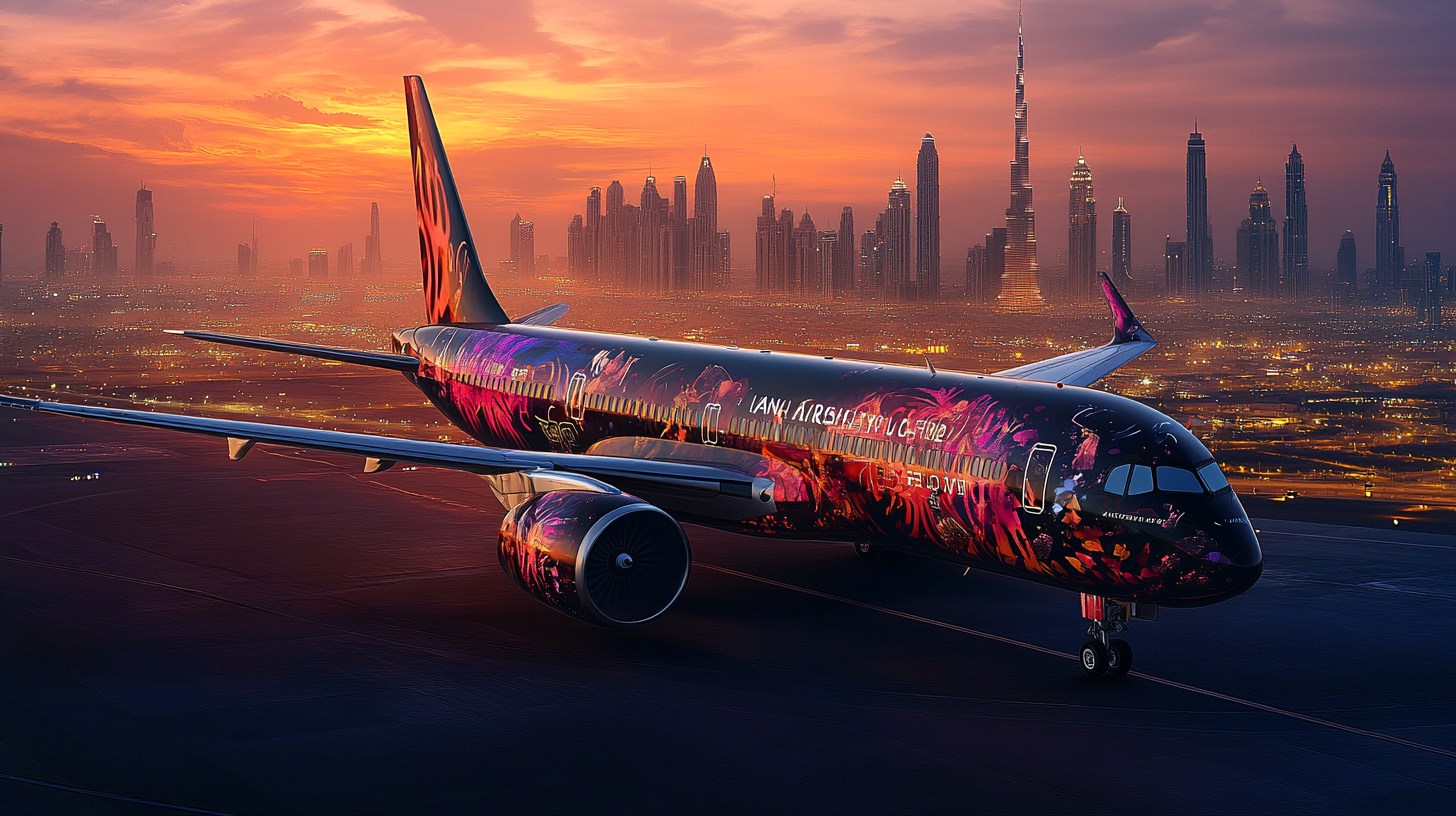
Airlines have long recognized the power of a striking aircraft exterior to not only stand out in the crowded skies but also to forge an emotional connection with the public. More than just a paint job applied to the fuselage, an aircraft’s livery serves as a flying billboard—an ambassador of the airline—embodying its brand identity and storytelling potential. These airborne canvases capture the imagination of passengers, plane spotters, and aviation enthusiasts around the globe, often sparking conversations and leaving lasting impressions.
In recent years, fueled by the ever-growing influence of visual media and a desire to differentiate themselves in a competitive market, there’s been a surge in airlines experimenting with limited-edition liveries and brand collaborations. This trend has transformed the skies into a vibrant tapestry of art, culture, and innovation, where each aircraft tells its own unique story.
The Art of the Sky: The Role of Livery in Airline Branding
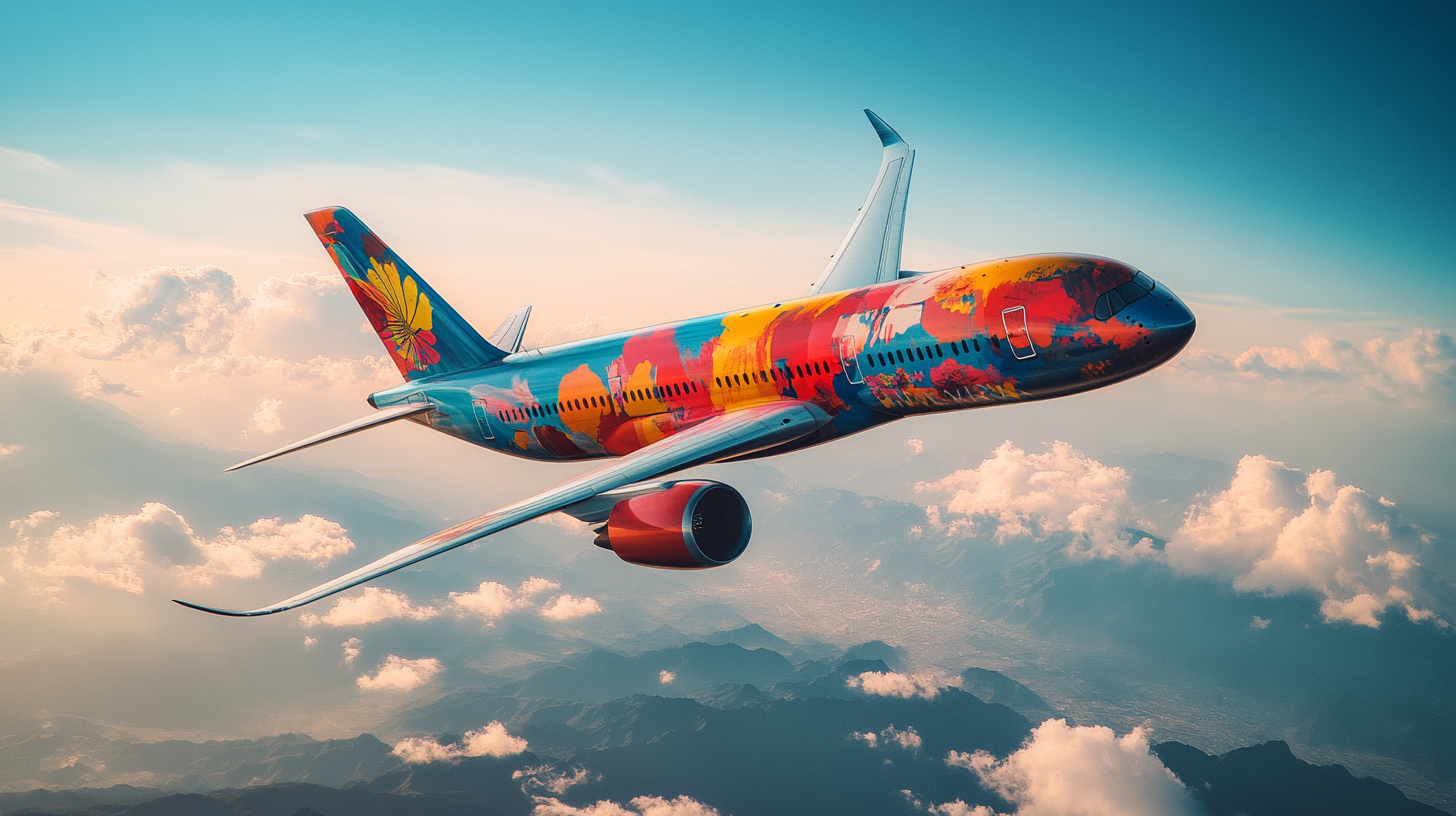
An airline’s livery is far more than decorative flair; it’s a critical element of branding and marketing. It serves as the most visible representation of the airline’s identity, often becoming synonymous with the company itself. The exterior design of an aircraft combines color, graphics, and typography to create a recognizable and memorable image that flies across continents. Through the careful selection of hues, distinctive logos, and stylized fonts, airlines create a cohesive visual language that communicates their values and aspirations to a global audience.
Historically, liveries have evolved from purely functional markings to iconic symbols, such as Pan Am’s globe, which fostered brand visibility and loyalty. Effective liveries tell a story through colors and patterns, often reflecting an airline’s heritage or mission. For instance, an airline with roots in a particular country may incorporate national colors or cultural motifs into its livery, thereby strengthening its connection with passengers and evoking a sense of pride. They can also raise social awareness by supporting causes through collaborative designs.
The considerations in livery design are multifaceted, including brand consistency, cultural sensitivity, and durability to withstand harsh flight conditions. As highlighted in the importance of airline visual identity in branding strategies , the livery plays a pivotal role in how an airline is perceived by the public.
Creativity Takes Flight: Special Liveries and Collaborations
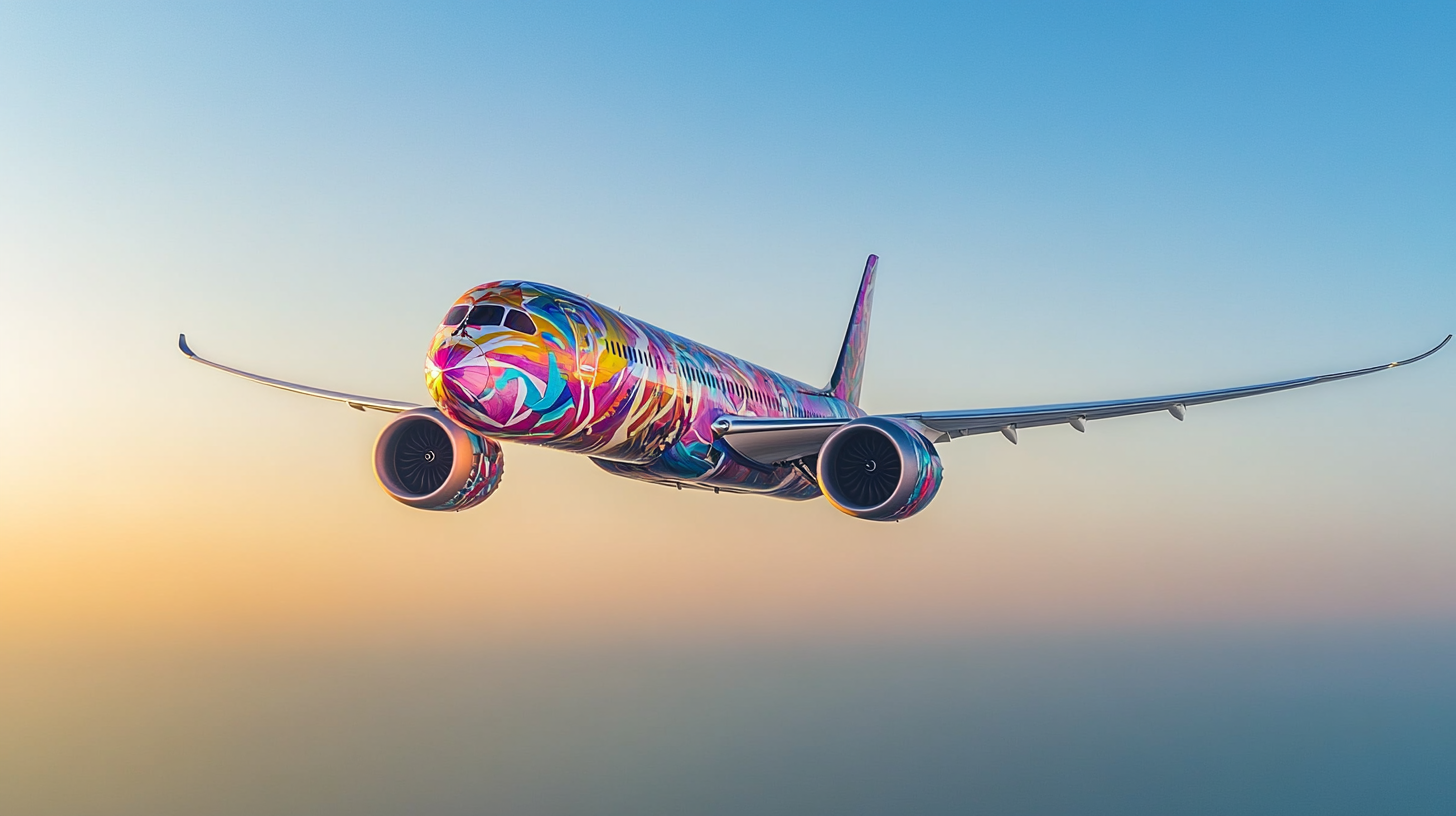
Special liveries have become a canvas for airlines to showcase creativity and engage with popular culture. These unique designs often emerge from partnerships with brands, films, or cultural icons, adding variety and visual interest for passengers and planespotters. Through these eye-catching liveries, airlines are able to transcend traditional branding, tapping into the zeitgeist and resonating with audiences on a deeper level. They not only attract attention but also create buzz on social media platforms, amplifying the reach of both the airline and its collaborative partners.
EVA Air, for instance, has captivated fans with its Hello Kitty-themed planes, turning flights into a whimsical experience. The aircraft exterior features the beloved character in various playful scenes, while the themed experience continues onboard with Hello Kitty-themed amenities—from headrest covers to in-flight meals—providing passengers with a unique and memorable journey. By integrating the popular Sanrio character into their branding, EVA Air appeals to both children and adults who hold affection for Hello Kitty, enhancing customer satisfaction and differentiating themselves in the market.
All Nippon Airways (ANA) took fans to a galaxy far, far away with Star Wars-themed aircraft, including designs inspired by beloved characters and droids. Their “Flying Honu” livery features vibrant sea turtle designs, highlighting environmental themes. The Star Wars collaboration not only thrilled fans of the franchise but also showcased ANA’s commitment to delivering innovative experiences. Similarly, the “Flying Honu” A380s, adorned with intricately detailed sea turtle artwork, were designed to celebrate the carrier’s new route to Hawaii, where sea turtles are a native species and a symbol of good luck and longevity.
Emirates Airlines embraced wildlife conservation by adorning their A380s with images of endangered species, raising awareness for crucial environmental causes. Through their “United for Wildlife” livery, Emirates transformed their aircraft into a powerful statement against poaching and illegal wildlife trade. The stunning images of lions, tigers, and elephants not only draw attention but also signal the airline’s commitment to corporate social responsibility and environmental stewardship. Such partnerships, as detailed in influential airline brand collaborations with the entertainment industry , enable airlines to tap into wider audiences and create synergistic marketing opportunities.
Marketing in the Skies: Leveraging Special Liveries
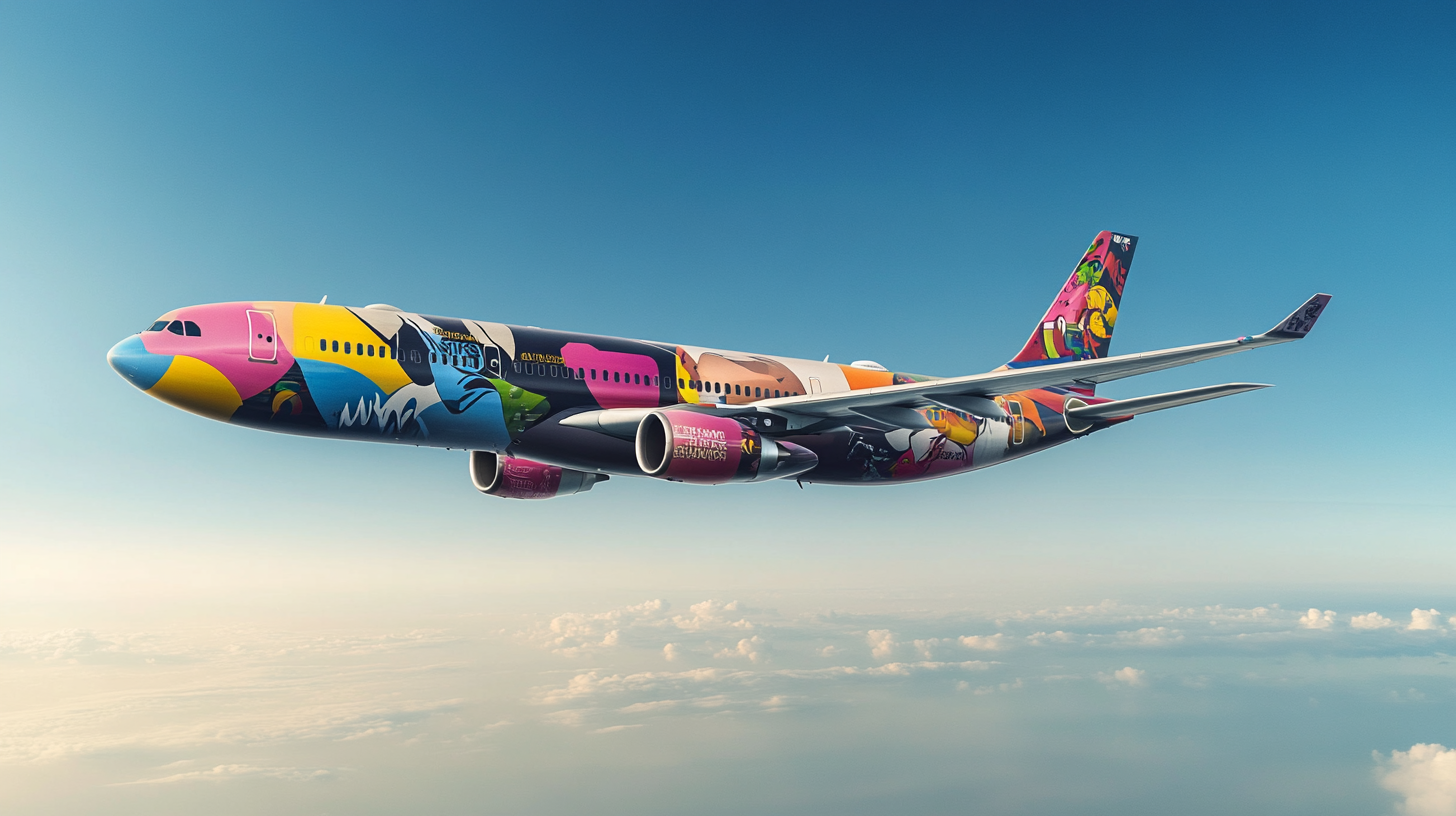
Airlines utilize special liveries as powerful marketing tools to boost brand recognition and celebrate milestones. By unveiling distinctive liveries, airlines can generate media attention and engage with customers in fresh, dynamic ways. These liveries often coincide with significant anniversaries, new route launches, or the introduction of new aircraft models, serving as visual markers of progress and celebration.
Retro liveries, for example, honor an airline’s history, evoking nostalgia and enhancing emotional connections with passengers. Airlines like British Airways and American Airlines have repainted aircraft in historical liveries, paying homage to their storied pasts. These retro designs not only appeal to longtime customers who recall earlier eras but also educate newer generations about the airline’s heritage, creating a bridge between the past and present.
Sports-themed designs bolster national pride and team reputations, especially during major events. During occasions like the FIFA World Cup or the Olympics, airlines often unveil special liveries featuring national team colors or mascots. For instance, Lufthansa’s “Fanhansa” livery celebrated Germany’s national football team, fostering a sense of unity and national pride among passengers.
Airline alliances such as oneworld, SkyTeam, and Star Alliance employ special liveries to promote connectivity and collaboration among member airlines. Aircraft painted in alliance liveries symbolize the collective strength and global reach of these partnerships. They serve as a visual representation of the seamless travel experience offered to customers through shared routes, lounges, and frequent flyer benefits, reinforcing the benefits of global networks.
Advertising partnerships also find a place on aircraft exteriors. Airlines may feature corporate sponsors, films, or cultural events, turning flights into moving billboards that reach international audiences. These partnerships allow airlines to generate additional revenue streams while offering brands unprecedented exposure. Whether it’s promoting a blockbuster film release or supporting a cultural festival, such collaborations leverage the high visibility of aircraft to reach diverse audiences across the world. As discussed in strategies for leveraging aircraft liveries in airline marketing , these visual branding efforts can significantly impact customer engagement and brand perception.
The Craft of Livery Design: Behind the Scenes
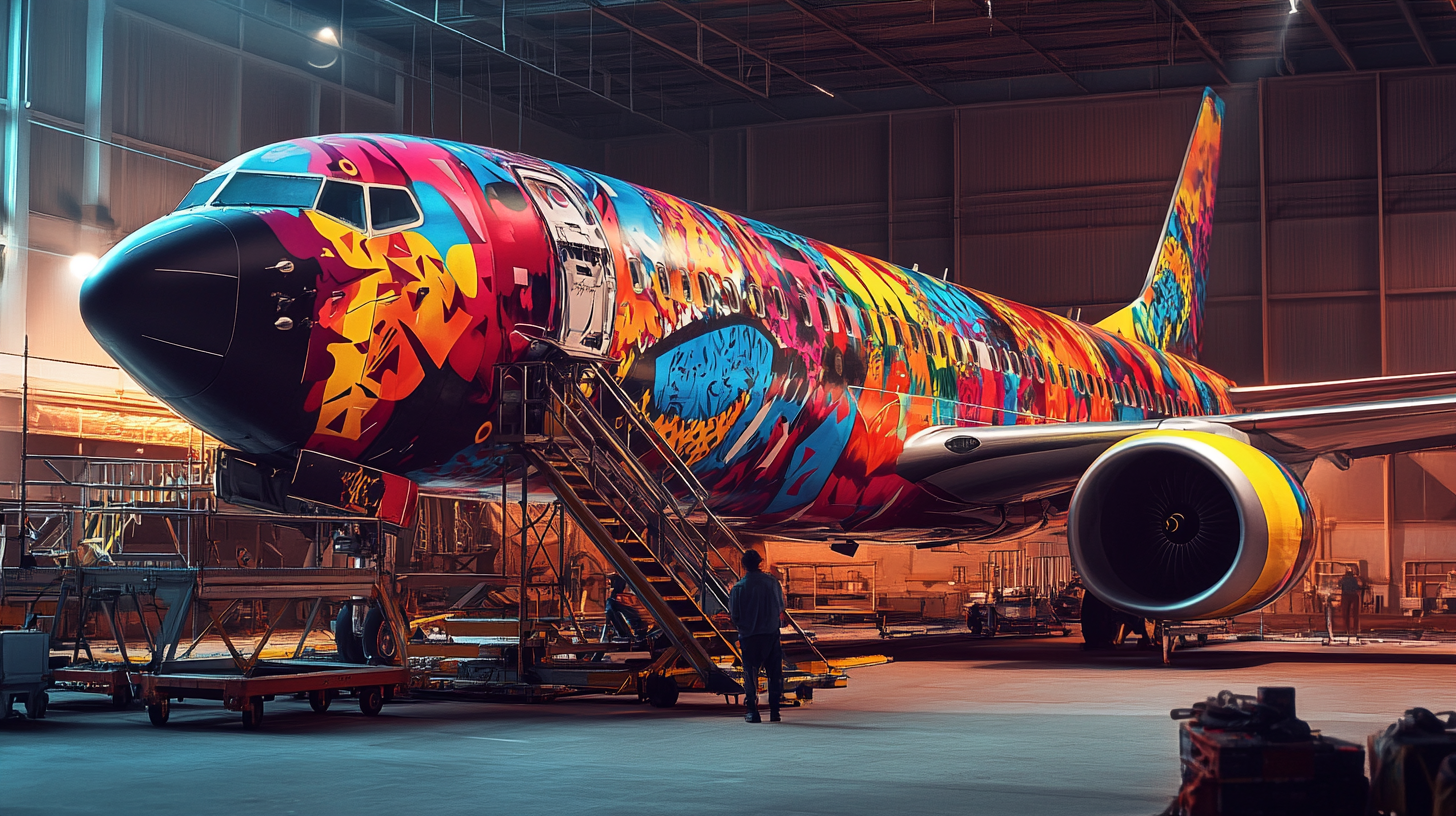
Designing an aircraft livery is an intricate process that goes beyond aesthetics, requiring a deep understanding of the airline’s brand values, market positioning, and target audience. It involves strategic brand understanding, cultural inspirations, and technical considerations. Designers must consider how the livery will appear in different lighting conditions and at various altitudes, ensuring that the visual impact remains consistent.
Ryan Frost, Executive Creative Director at Landor & Fitch, highlights the complexity of translating designs across various aircraft types while ensuring economic and technical feasibility. Frost explains that what looks striking on paper may present challenges when applied to the contours of an aircraft fuselage. Designers must adapt their concepts to fit different aircraft models, accounting for variations in size and shape without compromising the integrity of the design. Additionally, they must consider factors such as the cost of application and long-term maintenance, ensuring that the livery is practical as well as visually appealing.
Creative Director Edmond Huot, known for his work with Northern Pacific Airways, emphasizes the importance of aligning marketing goals with aesthetic principles. His approach includes crafting passenger personas to drive brand development, ensuring that the design resonates with diverse audiences. By creating detailed passenger personas, Huot tailors the livery to reflect the aspirations and preferences of the airline’s target customers. This method ensures that the visual identity is not only attractive but also meaningful to those who interact with the brand. Huot’s work often draws inspiration from landscapes and cultural elements, as seen in Northern Pacific’s livery inspired by the Alaskan wilderness. For example, their livery, inspired by the rugged beauty of Alaska, evokes a sense of adventure and connection with nature, aligning with the airline’s brand narrative.
Collaboration with airline clients and Original Equipment Manufacturers (OEMs) is critical to address practical factors like color choices for heat deflection and damage detection. Technical considerations play a significant role in the final design. Color choices can impact the aircraft’s temperature, with lighter colors reflecting sunlight and reducing heat absorption. Airlines also prefer colors that make it easier to spot cracks, dents, or other damage during inspections. The use of white paint, for instance, is common for its reflective properties and ease of maintenance. The selection of paint materials must comply with aviation safety standards and contribute minimally to the aircraft’s weight to avoid affecting fuel efficiency. Therefore, the design process involves a delicate balance between creative expression and engineering requirements. The complexities involved in aircraft livery design are further explored in challenges of translating brand identity onto aircraft exteriors , offering insights into the meticulous planning behind these airborne artworks.
Recent Rebrandings: Reflecting Evolution and Ambition
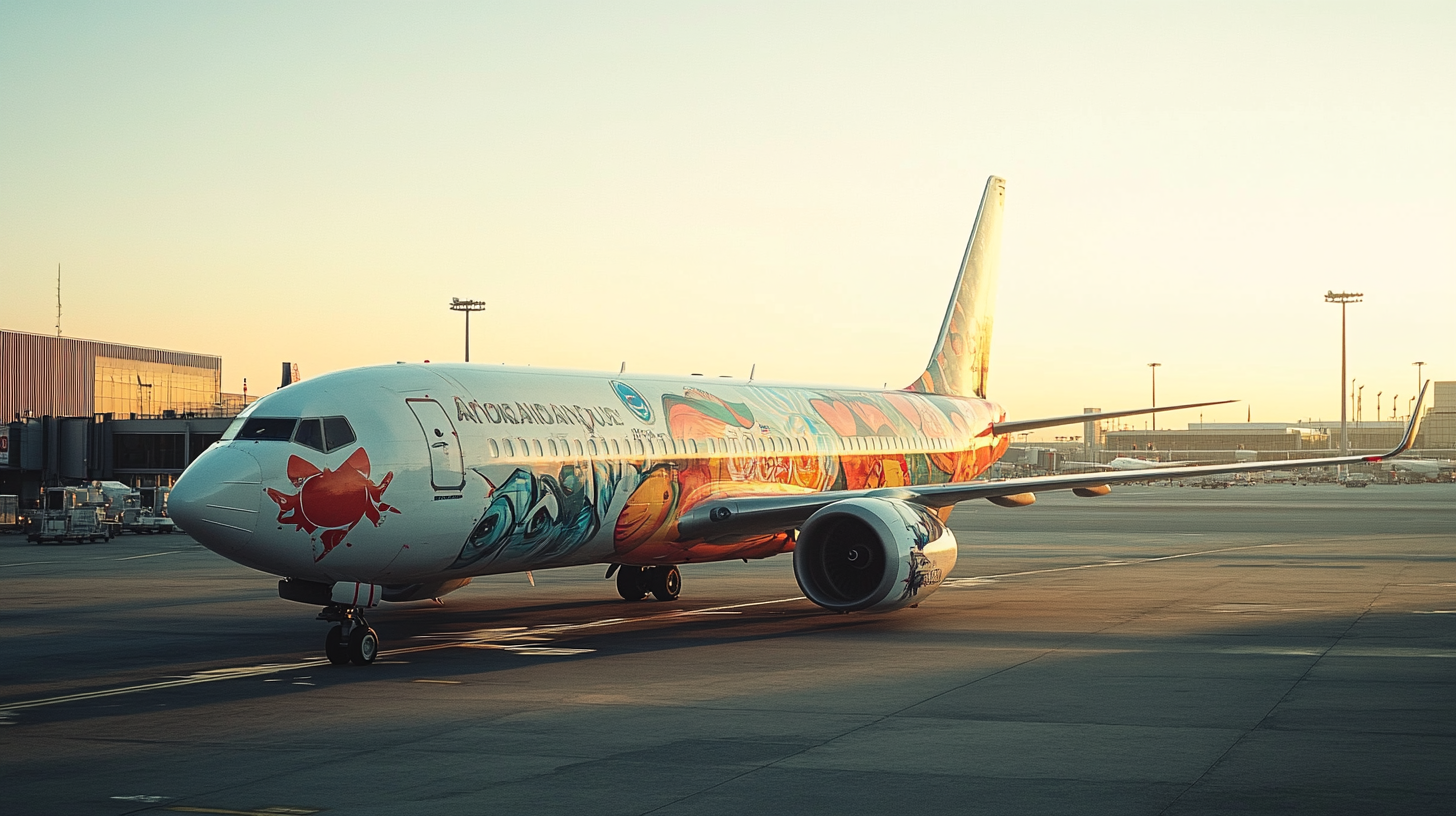
In 2023, several airlines unveiled new branding to mirror corporate evolution and strategic shifts. These rebrandings reflect a desire to stay relevant in a rapidly changing industry, adapting to new market conditions and consumer expectations. Saudia introduced a color scheme symbolizing national heritage and ambitions, aiming to position itself prominently in the aviation world. The new livery incorporates shades inspired by the Saudi Arabian landscape and culture, seeking to convey a modern yet authentic image. The redesign aligns with the country’s broader Vision 2030 initiative, which aims to diversify the economy and promote tourism.
Avianca rebranded to adopt a Low-Cost Carrier (LCC) model, seeking to be more accessible to a broader market. This shift involved not only changes in the livery but also adjustments to the airline’s operational model. The new visual identity simplifies the design, reflecting the no-frills service associated with LCCs while retaining elements that denote quality and reliability.
Air India Express and Air India refreshed their identities, with Air India planning interior upgrades and a new livery for its Airbus A350. The rebranding efforts aim to rejuvenate the airline’s image, modernizing its appearance to appeal to contemporary travelers. The updated livery is expected to blend traditional Indian motifs with a sleek, modern aesthetic, symbolizing the airline’s commitment to both heritage and innovation. JetBlue updated its signature aircraft tails with an all-blue design, reinforcing its brand identity. Known for its distinctive tailfin patterns, JetBlue’s new design consolidates its visual identity, creating a cohesive and easily recognizable fleet. The all-blue tails reinforce the airline’s name and commitment to providing a fresh, friendly flying experience.
Other airlines like Emirates, HK Express, Copa, Zipair Tokyo, Condor, and Icelandair also refreshed their liveries. Each of these airlines has undertaken rebranding efforts to align with strategic goals or reflect changes in their service offerings. For example, Condor introduced bold, colorful stripes inspired by vacation motifs, signaling its focus on leisure travel. Zipair Tokyo adopted a minimalist design that reflects its identity as a modern, efficient carrier. These updates align with cultural values or operational strategies, demonstrating how visual identity supports broader business objectives. For more insight into these trends, see the role of rebranding in airline competitive strategy , which examines how visual transformations impact market positioning.
Iconic Liveries: Case Studies in Branding
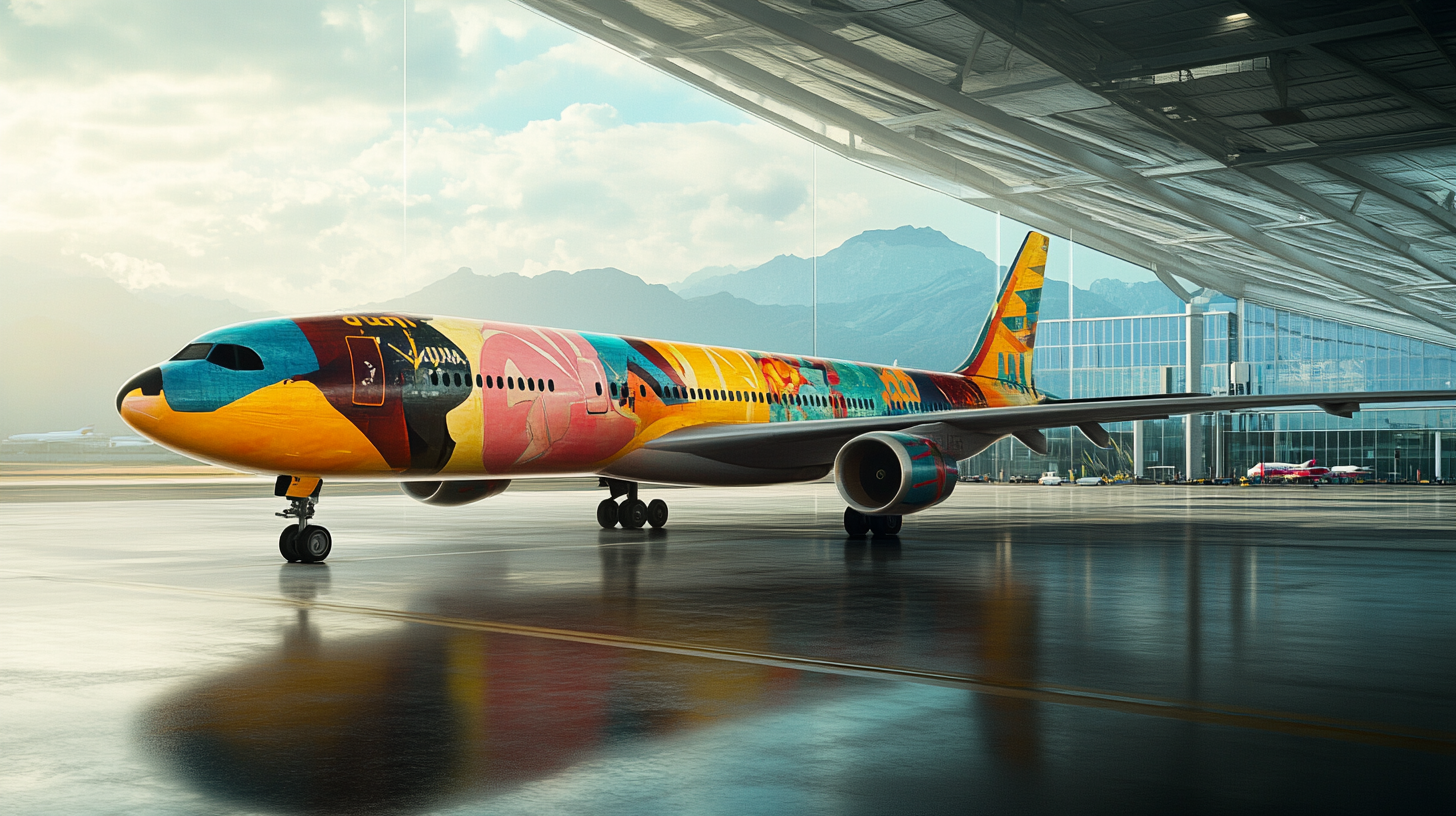
Virgin Atlantic’s iconic red-themed livery, featuring the renowned “Flying Lady,” has continuously evolved since the airline’s inception in 1984. Inspired by the figurehead on historic sailing ships, the “Flying Lady” embodies the spirit of adventure and innovation that characterizes the airline. The livery balances aesthetics and practicality, utilizing high-quality paints and materials to endure harsh flight conditions while ensuring brand recognition. According to Nina Jenkins, head of the brand design team, the 2010 rebrand by Johnson Banks enhanced its signature look, introducing a metallic sheen and refined graphics that modernized the image without losing its essence. This rebrand also led to various unique editions that marked significant events, such as the “Pride Flight” livery celebrating LGBTQ+ diversity.
United Airlines, in unveiling its first new livery design since merging with Continental Airlines, sought to project a modern identity while staying true to its 93-year history. The updated livery retained the iconic globe emblem, symbolizing the airline’s worldwide reach, but introduced a new color palette and updated typography to reflect a more contemporary aesthetic. Katie Conway, United’s Senior Strategy Director, emphasized the necessity for legacy brands to evolve without losing core values. The visual refresh was part of a broader initiative to improve customer experience and operational efficiency. The rebranding aimed to impact consumer perception positively and boost employee morale by signaling progress and investment in the airline’s future. These case studies highlight the delicate balance between innovation and tradition in airline branding, as further explored in evolving brand identities in the aviation industry .
Impact on Passengers and Enthusiasts
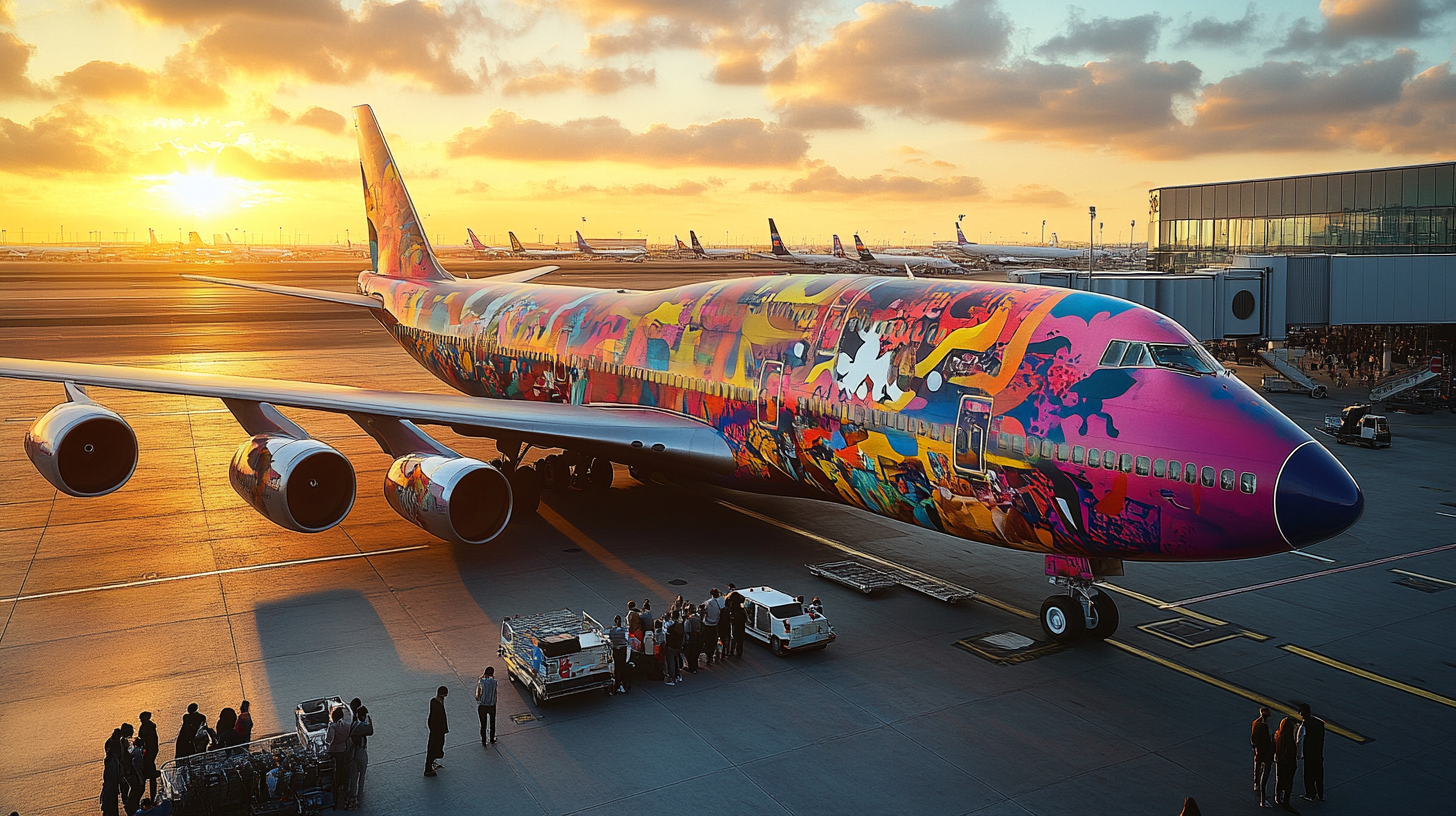
Special liveries not only serve marketing purposes but also enhance the passenger experience. They add excitement and a sense of exclusivity to flights, often becoming a topic of conversation among travelers. Boarding an aircraft adorned with a unique design can elicit feelings of surprise and delight, turning a routine journey into a special occasion. Passengers may share photos on social media, amplifying the airline’s reach and fostering a sense of community among travelers who have experienced the same livery.
For aviation enthusiasts and planespotters, these unique designs provide visual interest and collectibles, enriching their engagement with the industry. Enthusiasts often track special liveries, eagerly awaiting opportunities to photograph them or add them to their lists of sightings. Airlines may engage with this community by releasing schedules or hosting events, further strengthening the bond between the brand and its most passionate followers.
Retro liveries and culturally significant designs foster emotional connections, making passengers feel part of an airline’s journey or a broader narrative. These liveries can evoke nostalgia or highlight important cultural themes, resonating with passengers on a deeper level. They can reassure travelers by reflecting stability and heritage, while also intriguing them with contemporary flair. The psychological impact of airline liveries on passenger experience is discussed in the influence of aircraft design on traveler perception , offering insights into how visuals affect customer satisfaction.
Final Thoughts
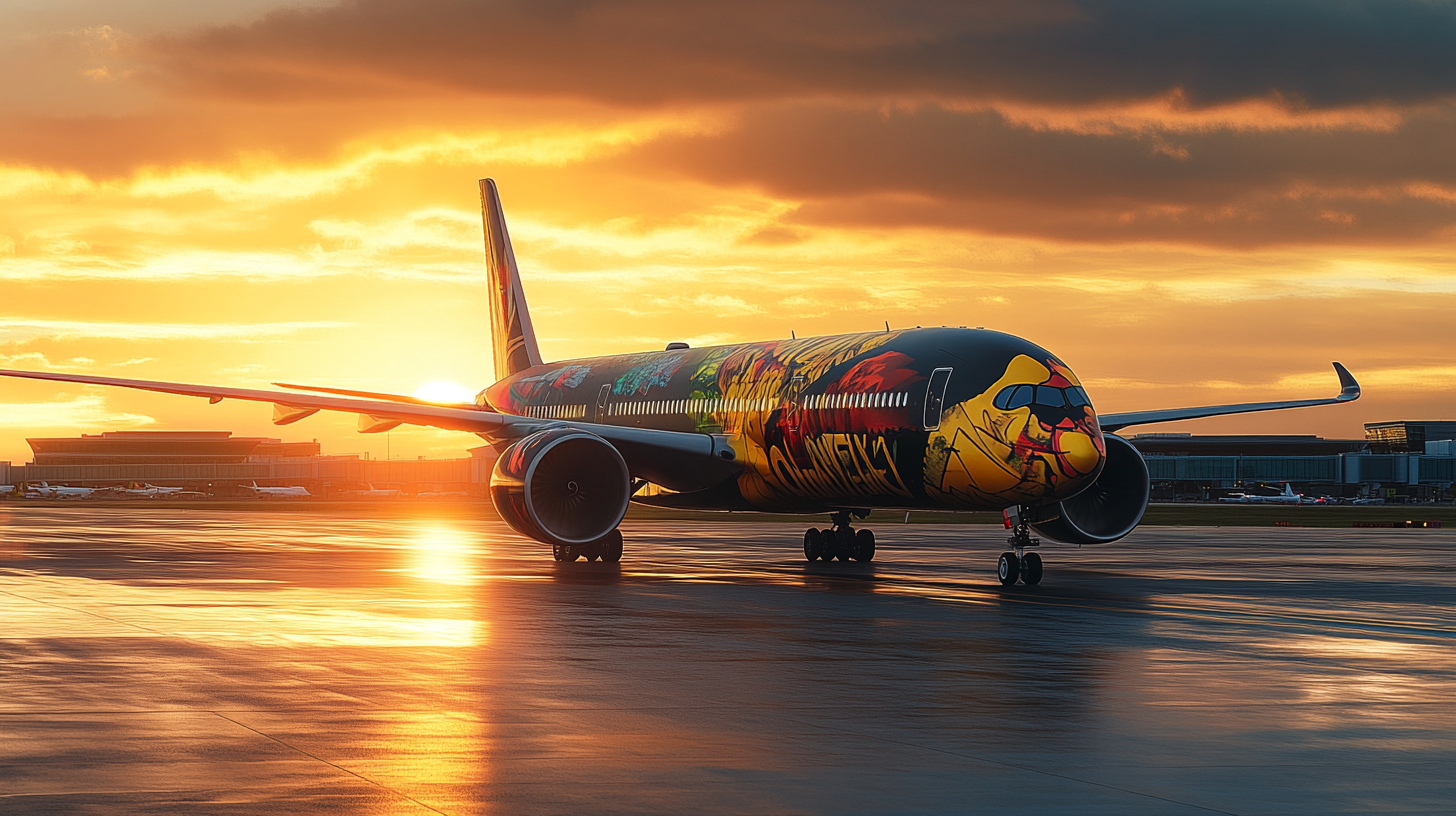
When airlines experiment with limited-edition liveries and brand collaborations, they transform the skies into a dynamic showcase of art, culture, and innovation. Through these vivid and imaginative designs, airlines can differentiate themselves in a crowded market, tell compelling stories, and build stronger connections with their customers. These creative endeavors enhance brand visibility, support strategic objectives, and enrich the travel experience. The aircraft becomes more than a mode of transportation; it becomes a symbol of the airline’s values, ambitions, and personality.
Follow us back to Seat 5A for more insights and updates on the fascinating world of aviation branding.



